Role of Water Vapor Content in the Effects of Aerosol on the Electrification of Thunderstorms: A Numerical Study
Abstract
:1. Introduction
2. Brief Description of the Model
3. Experimental Design
4. Results and Discussion
4.1. Aerosol Effects on the Intensity of Electrical Activity and Sensitivity to Vapor Conditions
4.2. Response of Aerosol Effects on the Charge Structures to the Amount of Water Vapor Present
5. Summary and Conclusions
Acknowledgments
Author Contributions
Conflicts of Interest
References
- Mitzeva, R.P.; Latham, J.; Petrova, S.A. comparative modeling study of the early electrical development of maritime and continental thunderstorms. Atmos. Res. 2006, 82, 26–36. [Google Scholar] [CrossRef]
- Mansell, E.R.; Ziegler, C.L. Aerosol effects on simulated storm electrification and precipitation in a two-moment bulk microphysics model. J. Atmos. Sci. 2013, 70, 2032–2050. [Google Scholar] [CrossRef]
- Zhao, P.; Yin, Y.; Xiao, H. The effects of aerosol on development of thunderstorm electrification: A numerical study. Atmos. Res. 2015, 153, 376–391. [Google Scholar] [CrossRef]
- Bell, T.L.; Rosenfeld, D.; Kim, K.M.; Yoo, J.M.; Lee, M.I.; Hahnenberger, M. Midweek increase in U.S. summer rain and storm heights suggests air pollution invigorates rainstorms. J. Geophys. Res. 2008, 113. [Google Scholar] [CrossRef]
- Wang, Y.; Wan, Q.; Meng, W.; Liao, F.; Tan, H.; Zhang, R. Long-term impacts of aerosols on precipitation and lightning over the Pearl River Delta megacity area in China. Atmos. Chem. Phys. 2011, 11, 12421–12436. [Google Scholar] [CrossRef]
- Stallins, J.A.; Carpenter, J.; Bentley, M.L.; Ashley, W.S.; Mulholland, J.A. Weekend-weekday aerosols and geographic variability in cloud-to-ground lightning for the urban region of Atlanta, Georgia, USA. Reg. Environ. Chang. 2013, 1, 137–151. [Google Scholar] [CrossRef]
- Middey, A.; Chaudhuri, S. The reciprocal relation between lightning and pollution and their impact over Kolkata, India. Environ. Sci. Pollut. Res. 2013, 20, 3133–3139. [Google Scholar] [CrossRef] [PubMed]
- Strikas, O.M.; Elsner, J.B. Enhanced cloud-to-ground lightning frequency in the vicinity of coal plants and highways in Northern Georgia, USA. Atmos. Sci. Lett. 2013, 14, 243–248. [Google Scholar] [CrossRef]
- Kar, S.K.; Liou, Y.A. Enhancement of cloud-to-ground lightning activity over Taipei, Taiwan in relation to urbanization. Atmos. Res. 2014, 147, 111–120. [Google Scholar] [CrossRef]
- Lyons, W.A.; Nelson, T.E.; Williams, E.R.; Cramer, J.A.; Turner, T.R. Enhanced positive cloud-to-ground lightning in thunderstorms ingesting smoke from fires. Science 1998, 282, 77–80. [Google Scholar] [CrossRef] [PubMed]
- Murray, N.D.; Orville, R.E.; Huffines, G.R. Effect of pollution from Central American fires on cloud-to-ground lightning in May 1998. Geophys. Res. Lett. 2000, 27, 2249–2252. [Google Scholar] [CrossRef]
- Fernandes, W.C.; Pinto, I.R.C.A.; Pinto, O., Jr.; Longo, K.M.; Freitas, S.R. New findings about the influence of smoke from fires on the cloud-to-ground lightning characteristics in the Amazon region. Geophys. Res. Lett. 2006, 33. [Google Scholar] [CrossRef]
- Altaratz, O.; Koren, I.; Yair, Y.; Price, C. Lightning response to smoke from Amazonian fires. Geophys. Res. Lett. 2010, 37. [Google Scholar] [CrossRef]
- Saleeby, S.M.; Cotton, W.R.; Lowenthal, D.; Borys, R.D.; Wetzel, M.A. Influence of cloud condensat ion nuclei on orographic snowfall. J. Appl. Meteorol. Climatol. 2009, 48, 903–922. [Google Scholar] [CrossRef]
- Saleeby, S.M.; Cotton, W.R.; Fuller, J. The cumulative impact of cloud droplet nucleating aerosols on orographic snowfall in Colorado. J. Appl. Meteorol. Climatol. 2011, 50, 604–625. [Google Scholar] [CrossRef]
- Saleeby, S.M.; Cotton, W.R.; Messina, J.; Beem, K. Aerosol impacts on the microphysical growth processes of orographic snowfall. J. Appl. Meteorol. Climatol. 2013, 52, 834–852. [Google Scholar] [CrossRef]
- Tao, W.; Li, X.; Khain, A.; Matsui, T.; Lang, S.; Simpson, J. Role of atmospheric aerosol concentration on deep convective precipitation: Cloud-resolving model simulation. J. Geophys. Res. 2007, 112. [Google Scholar] [CrossRef]
- Fan, J.; Zhang, R.; Li, G.; Tao, W. Effects of aerosols and relative humidity on cumulus clouds. J. Geophys. Res. 2007, 112. [Google Scholar] [CrossRef]
- Stevens, B.; Feingold, G. Untangling aerosol effects on clouds and precipitation in a buffered system. Nature 2009, 461, 607–613. [Google Scholar] [CrossRef] [PubMed]
- Carrió, G.G.; Cotton, W.R. On the buffering of CCN impacts on wintertime orographic clouds: An idealized examination. Atmos. Res. 2014, 137, 136–144. [Google Scholar] [CrossRef]
- Morrison, H.; Curry, J.A.; Khvorostyanov, V.I. A new double-moment microphysics scheme for application in cloud and climate models. Part 1: Description. J. Atmos. Sci. 2005, 62, 1665–1677. [Google Scholar] [CrossRef]
- Morrison, H.; Gettelman, A. A new two-moment bulk strati-form cloud microphysics scheme in the Community Atmosphere Model, version 3 (CAM3), Part I: Description and numerical tests. J. Climate 2008, 21, 3642–3659. [Google Scholar] [CrossRef]
- Mansell, E.R.; MacGorman, D.R.; Ziegler, C.L.; Straka, J.M. Charge structure and lightning sensitivity in a simulated multicell thunderstorm. J. Geophys. Res. 2005, 110, 1545–1555. [Google Scholar] [CrossRef]
- Marshall, T.C.; MacCarthy, M.P.; Rust, W.D. Electric field magnitudes and lightning initiation in thunderstorms. J. Geophys. Res. 1995, 100, 7097–7103. [Google Scholar] [CrossRef]
- Weisman, M.L.; Klemp, J.B. The dependence of numerically simulated convective storms on vertical wind shear and buoyancy. Mon. Weather Rev. 1982, 110, 504–520. [Google Scholar] [CrossRef]
- Chu, C.M.; Lin, Y.L. Effects of orography on the generation and propagation of mesoscale convective systems in a two-dimensional conditionally unstable flow. J. Atmos. Sci. 2000, 57, 3817–3837. [Google Scholar] [CrossRef]
- Gilmore, M.S.; Straka, J.M.; Rasmussen, E.N. Precipitation and evolution sensitivity in simulated deep convective storms: Comparisons between liquid-only and simple ice and liquid phase microphysics. Mon. Weather Rea. 2004, 132, 1897–1916. [Google Scholar] [CrossRef]
- Mansell, E.R.; MacGorman, D.R.; Ziegler, C.L.; Straka, J.M. Simulated three-dimensional branched lightning in a numerical thunderstorm model. J. Geophys. Res. 2002, 107. [Google Scholar] [CrossRef]
- Morrison, H.; Thompson, G.; Tatarskii, V. Impact of cloud microphysics on the development of trailing stratiform precipitation in a simulated squall line: Comparison of one- and two-moment schemes. Mon. Wea. Rea. 2009, 137, 991–1007. [Google Scholar] [CrossRef]
- Seifert, A.; Beheng, K.D. A two-moment cloud microphysics parameterization for mixed- phase clouds. Part 2: Maritime vs. continental deep convective storms. Meteor. Atmos. Phys. 2006, 92, 67–82. [Google Scholar] [CrossRef]
- MacGorman, D.R.; Cohen, A.; Mansell, T.; Ziegler, C. Flash rate, electrical, microphysical, and dynamical relationships across a simulated storm spectrum. In Proceedings of the 2008 AGU Fall Meeting, San Francisco, CA, USA, 15–19 December 2008.
- Wiens, K.C. Summary of Colorado State University’s LMA-Related Observations from STEPS. In Proceedings of the 2008 AGU Fall Meeting, San Francisco, CA, USA, 15–19 December 2008.
- Yair, Y.; Lynn, B.; Price, C.; Kotroni, V.; Lagouvardos, K.; Morin, E.; Mugnai, A.; Llasat, M.C. Predicting lightning density in Mediterranean storms based on the WRF model dynamic and microphysical fields. J. Geophys. Res. 2010, 115, D04025. [Google Scholar] [CrossRef]
- Saunders, C.P.R.; Peck, S.L. Laboratory studies of the influence of the rime accretion rate on charge transfer during crystal/graupel collisions. J. Geophys. Res. 1998, 103, 13949–13956. [Google Scholar] [CrossRef]
- Miller, K.; Gadian, A.; Saunders, C.P.R.; Latham, J.; Christian, H. Modelling and observations of thundercloud electrification and lightning. Atmos. Res. 2001, 58, 89–115. [Google Scholar] [CrossRef]
- Andreae, M.O.; Rosenfeld, D.; Artaxo, P.; Costa, A.A.; Frank, G.P.; Longo, K.M.; Silva-Dias, M.A.F. Smoking rain clouds over the Amazon. Science 2004, 303, 1337–1342. [Google Scholar] [CrossRef] [PubMed]
- Wang, C. A modeling study of the response of tropical deep convection to the increase of cloud condensation nuclei concentration: 1. Dynamics and microphysics. J. Geophys. Res. 2005, 110. [Google Scholar] [CrossRef]
- Khain, A.; Rosenfeld, D.; Pokrovsky, J. Aerosol impact on the dynamics and microphysics of deep convective clouds. Q. J. R. Meteorol. Soc. 2005, 131, 2639–2663. [Google Scholar] [CrossRef]
- Koren, I.; Kaufman, Y.J.; Rosenfeld, D.; Remer, L.A. Aerosol invigoration and restructuring of Atlantic convective clouds. Geophys. Res. Lett. 2005, 32. [Google Scholar] [CrossRef]
- Van Den Heever, S.C.; Carrio, G.G.; Cotton, W.R.; DeMott, P.J.; Prenni, A.J. Impacts of nucleating aerosol on Florida storms. Part I: Mesoscale simulations. J. Atmos. Sci. 2006, 63, 1752–1775. [Google Scholar] [CrossRef]
- Lin, J.C.; Matsui, T.; Pielke, S.R.A.; Kummerow, C. Effects of biomass-burning-derived aerosols on precipitation and clouds in the Amazon Basin: A satellite-based empirical study. J. Geophys. Res. 2006, 111. [Google Scholar] [CrossRef]
- Chen, J.; Yin, Y.; Xiao, H.; Chen, Q. A numerical investigation of the impacts of anthropogenic sulfate aerosol on regional climate in East Asia. Asia-Pac. J. Atmos. Sci. 2014, 50, 391–403. [Google Scholar] [CrossRef]
- Xiao, H.; Yin, Y.; Chen, Q.; Zhao, P. Impact of aerosol and freezing level on orographic clouds: A sensitivity study. Atmos. Res. 2016, 176, 19–25. [Google Scholar] [CrossRef]
- Xiao, H.; Yin, Y.; Jin, L.; Chen, Q.; Chen, J. Simulation of the effects of aerosol on mixed-phase orographic clouds using the WRF model with a detailed bin microphysics scheme. J. Geophys. Res. 2015, 120, 8345–8358. [Google Scholar] [CrossRef]
- Tao, W.; Chen, J.; Li, Z.; Wang, C.; Zhang, C. Impact of aerosols on convective clouds and precipitation. Rev. Geophys. 2012, 50. [Google Scholar] [CrossRef]
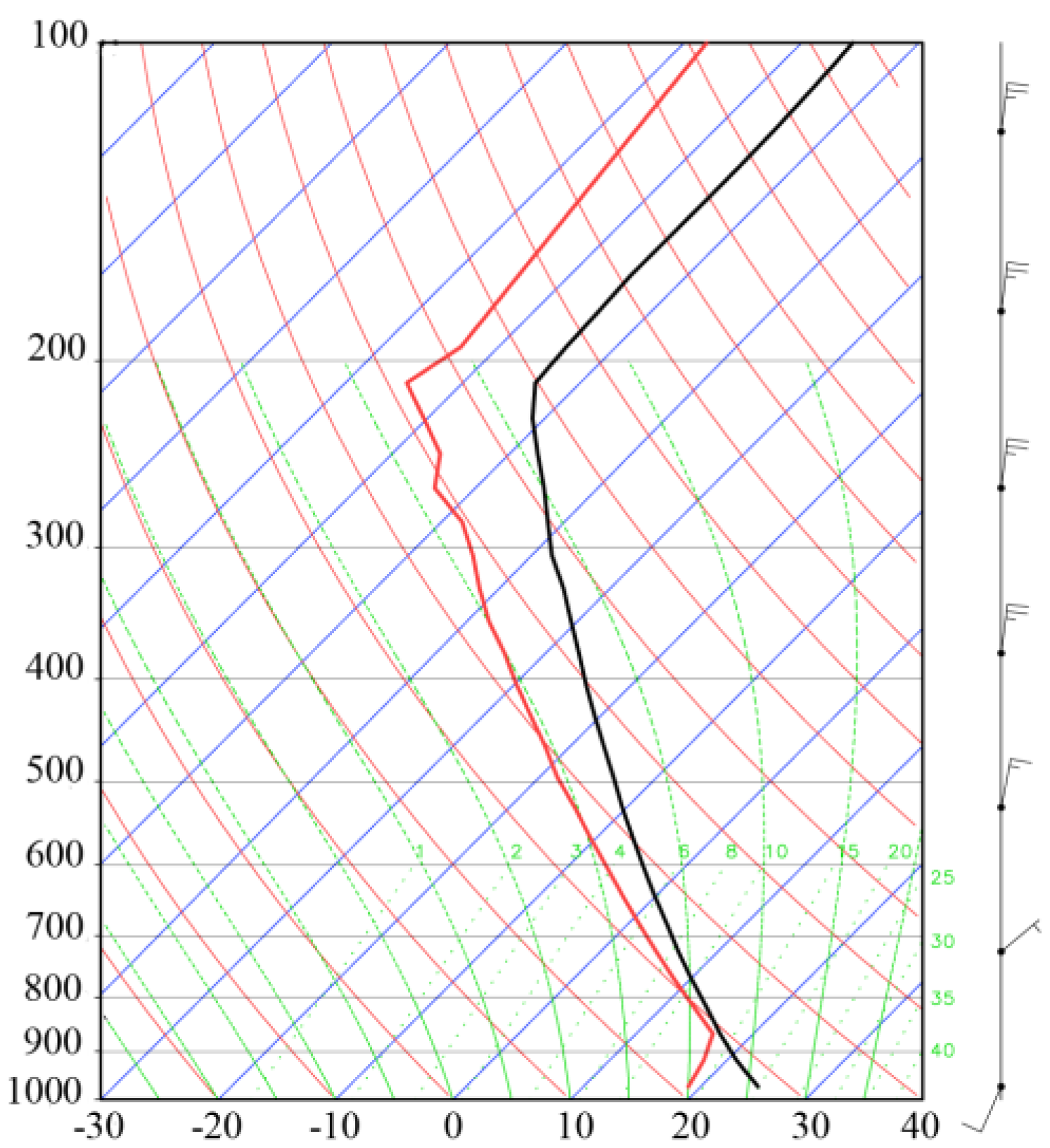
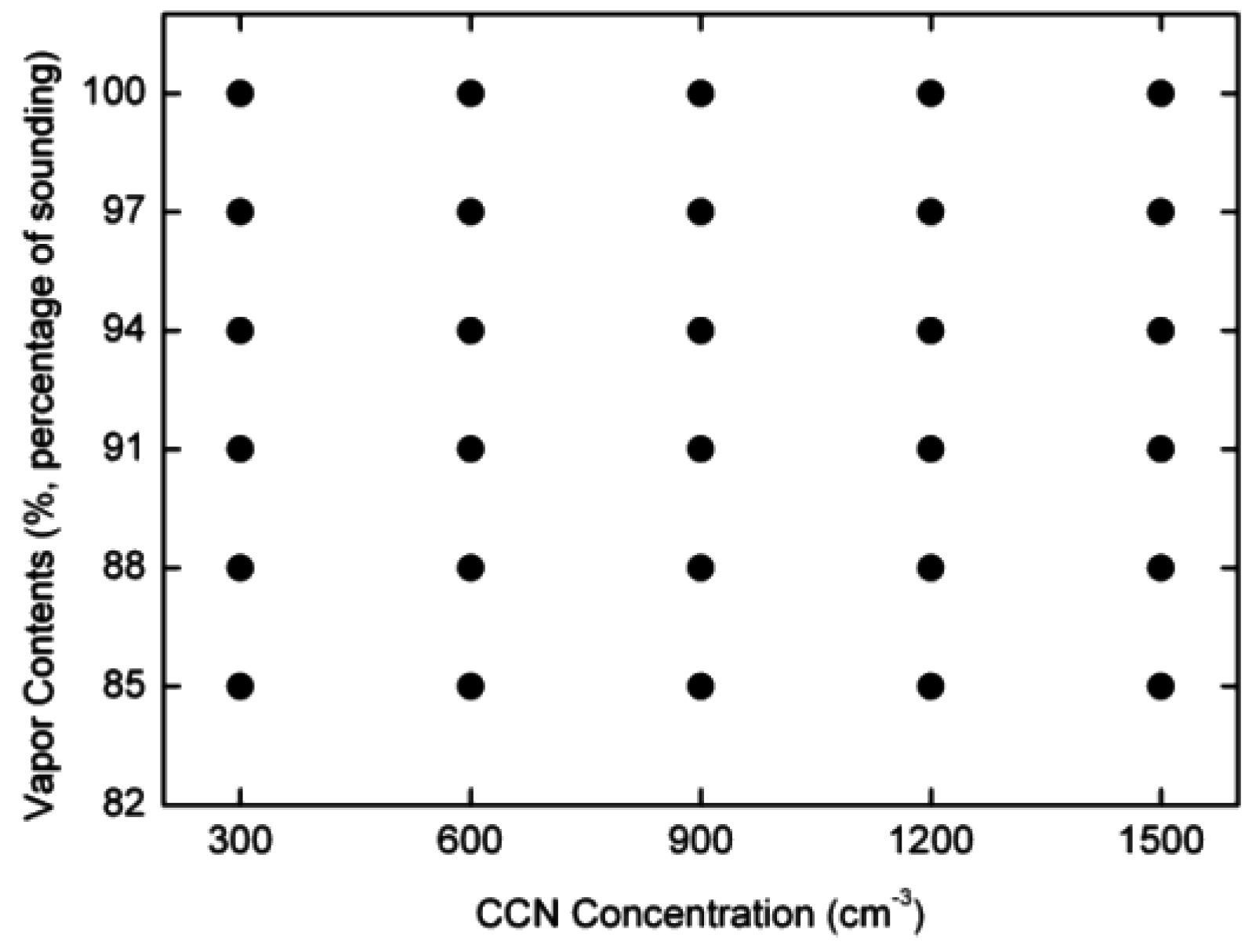
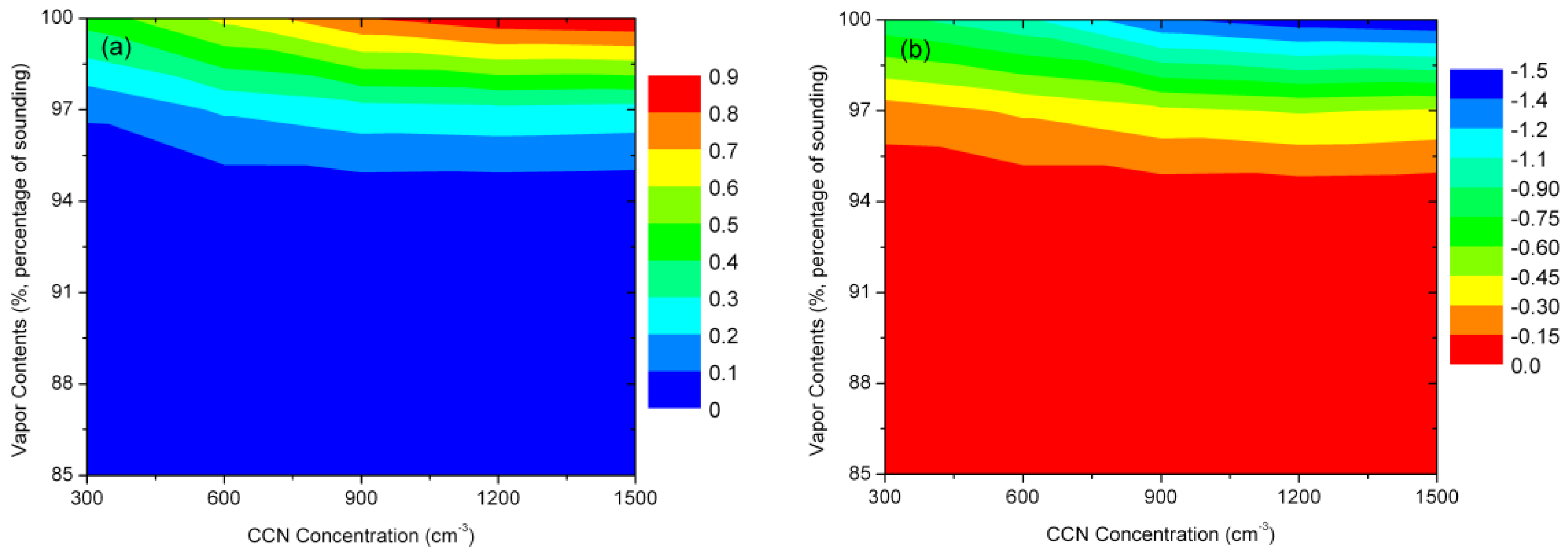
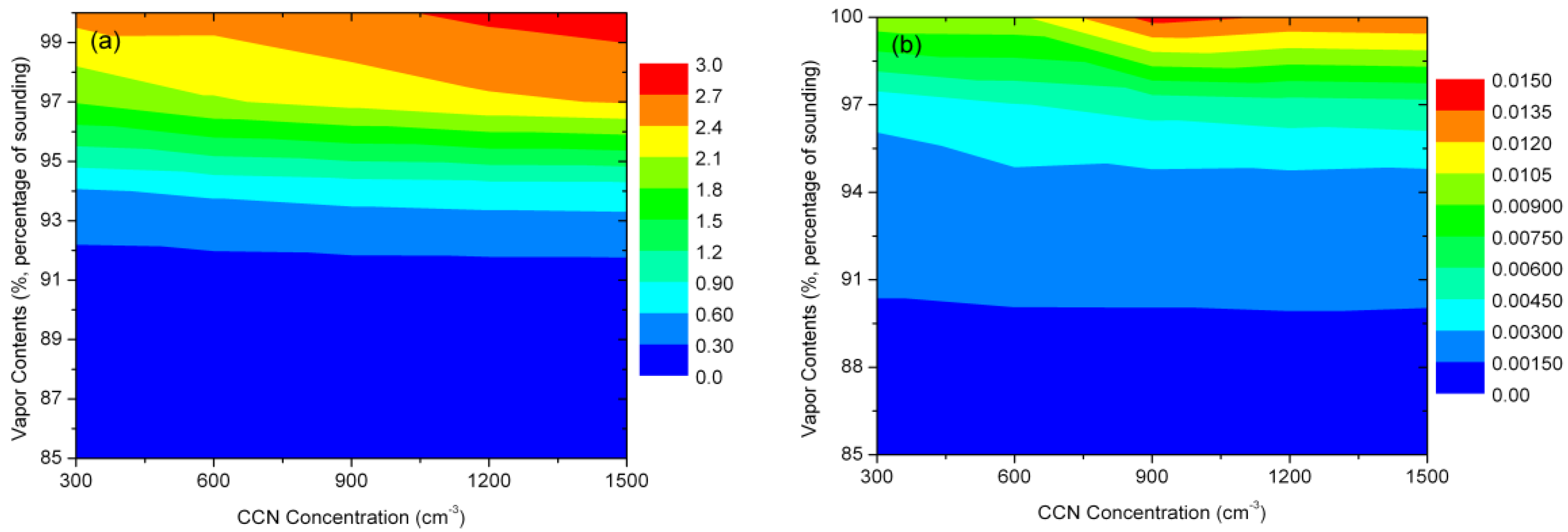
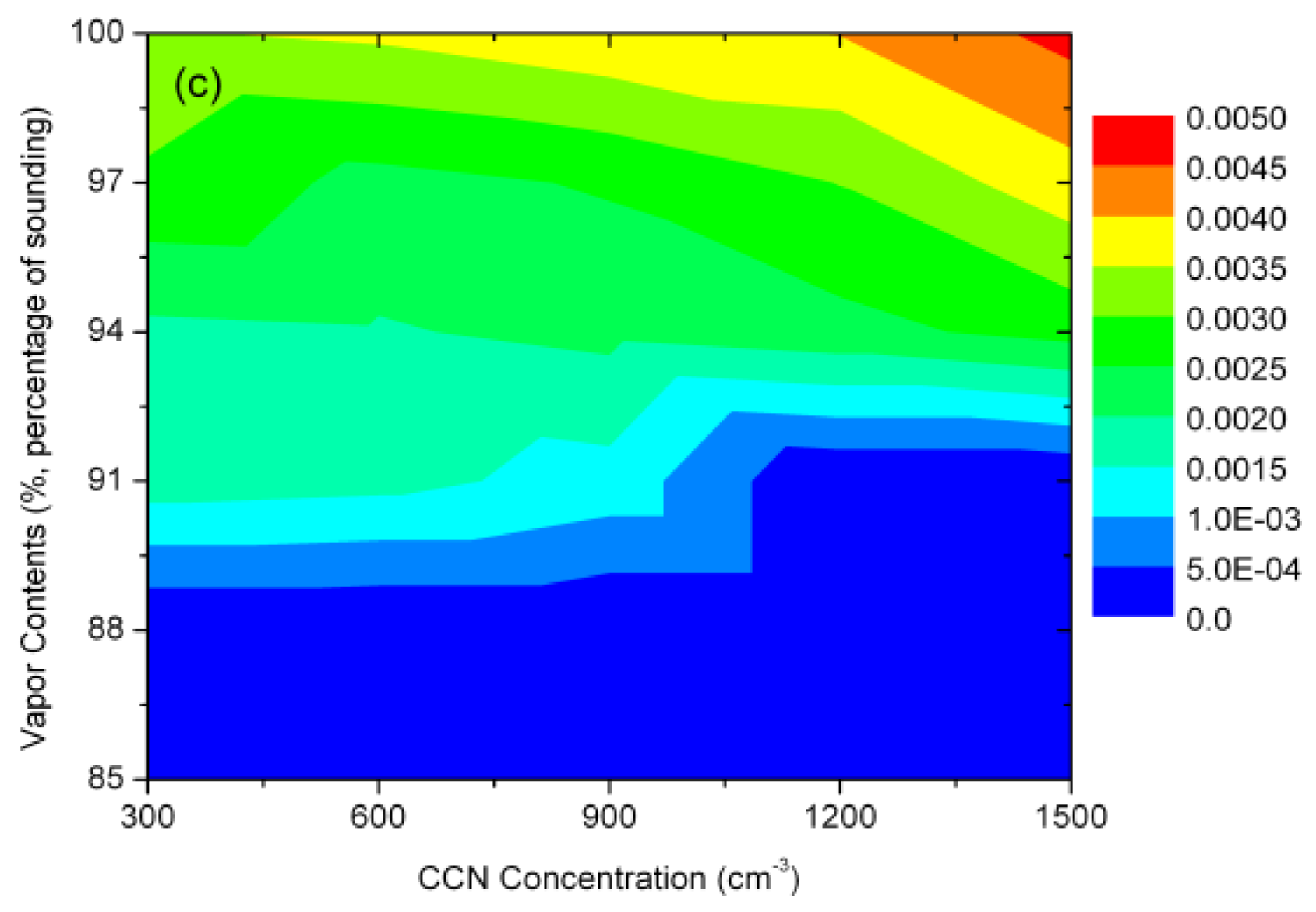
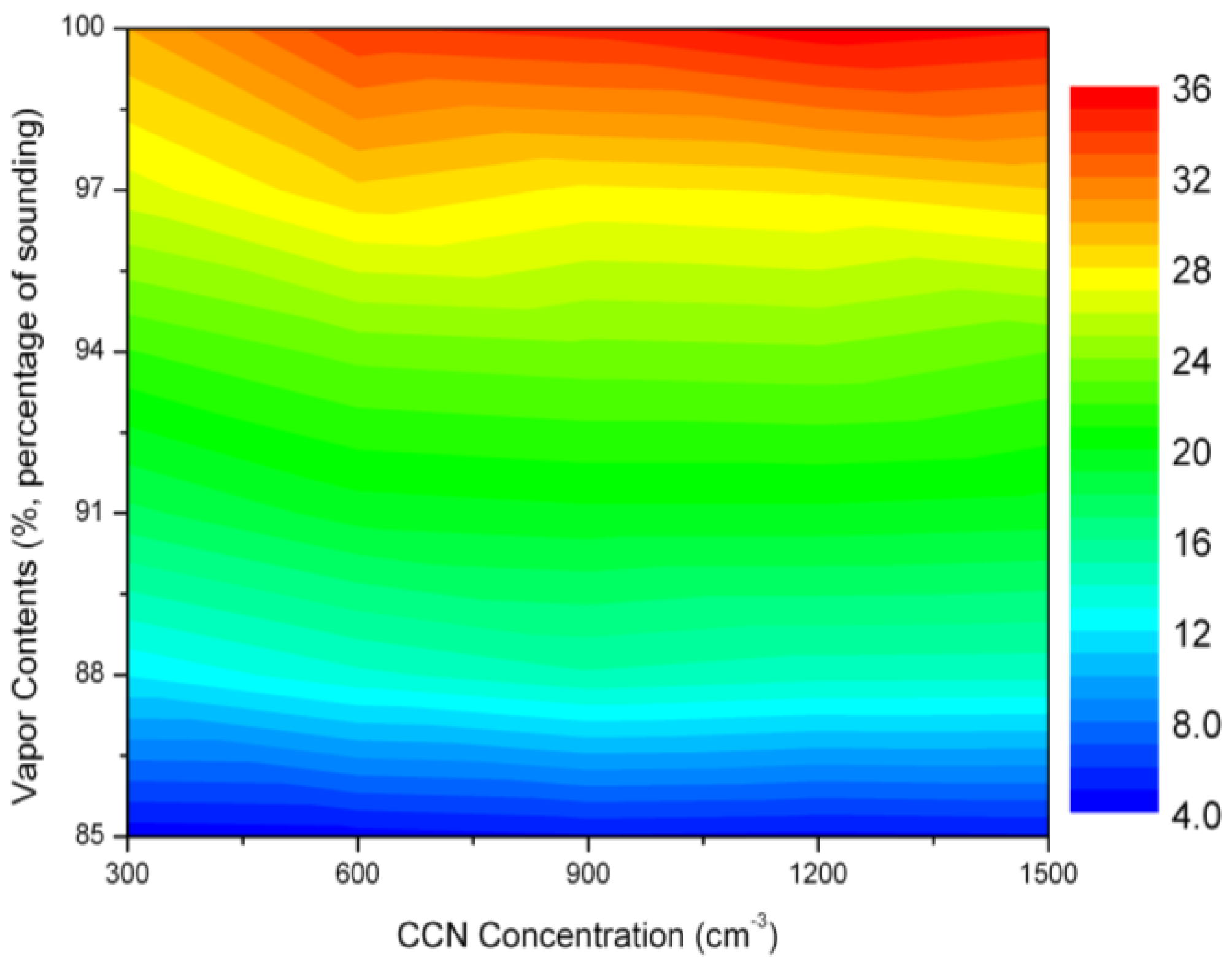
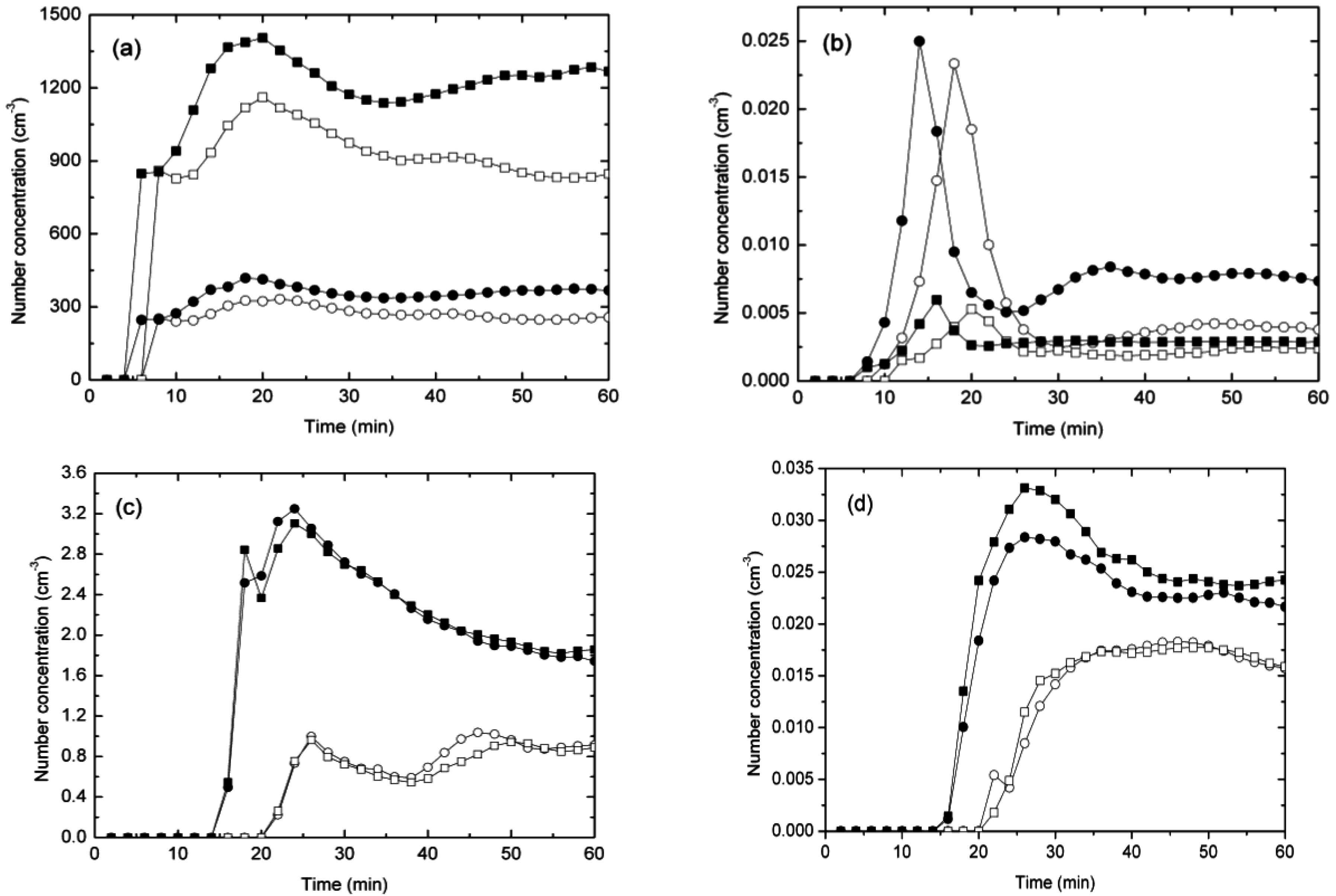
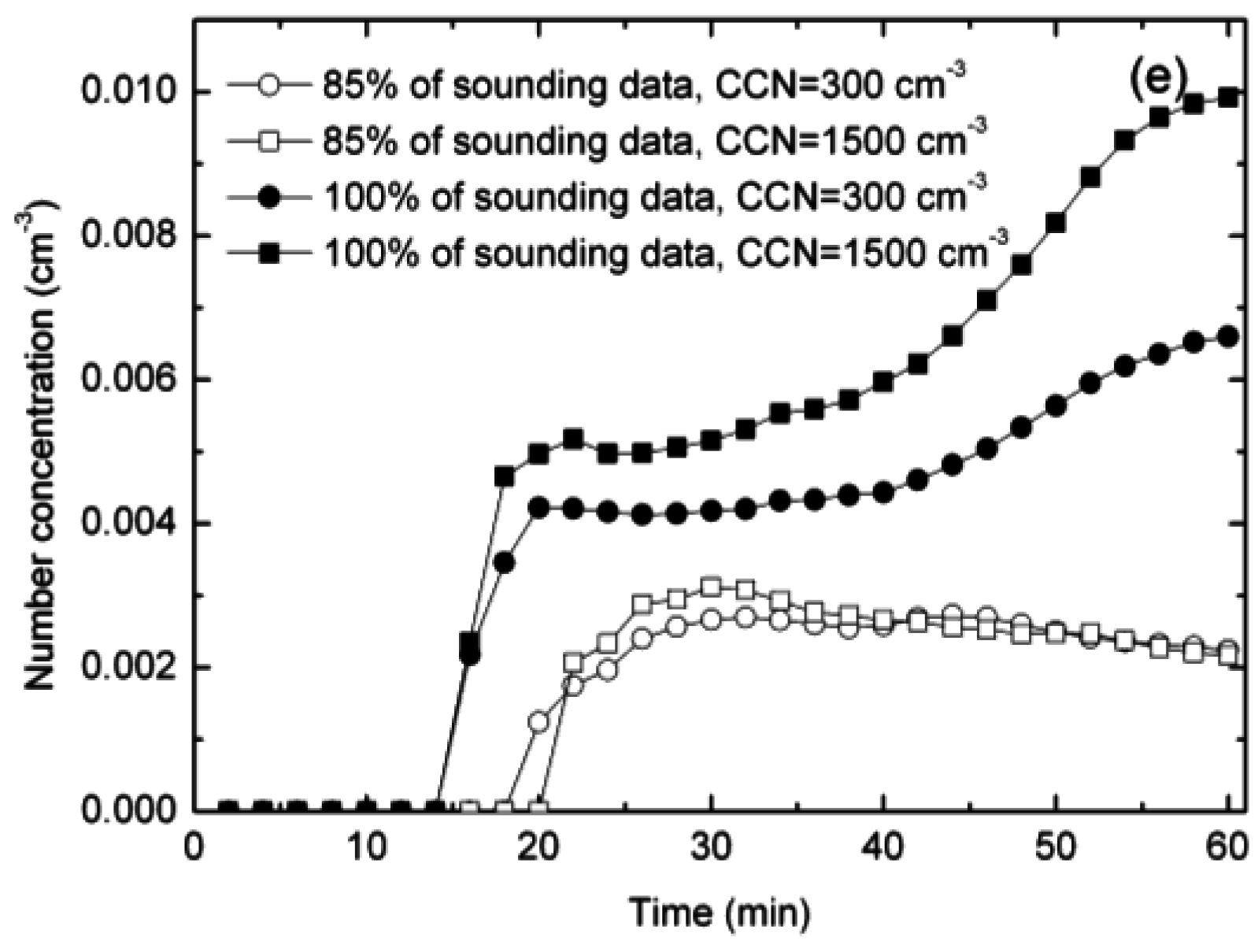
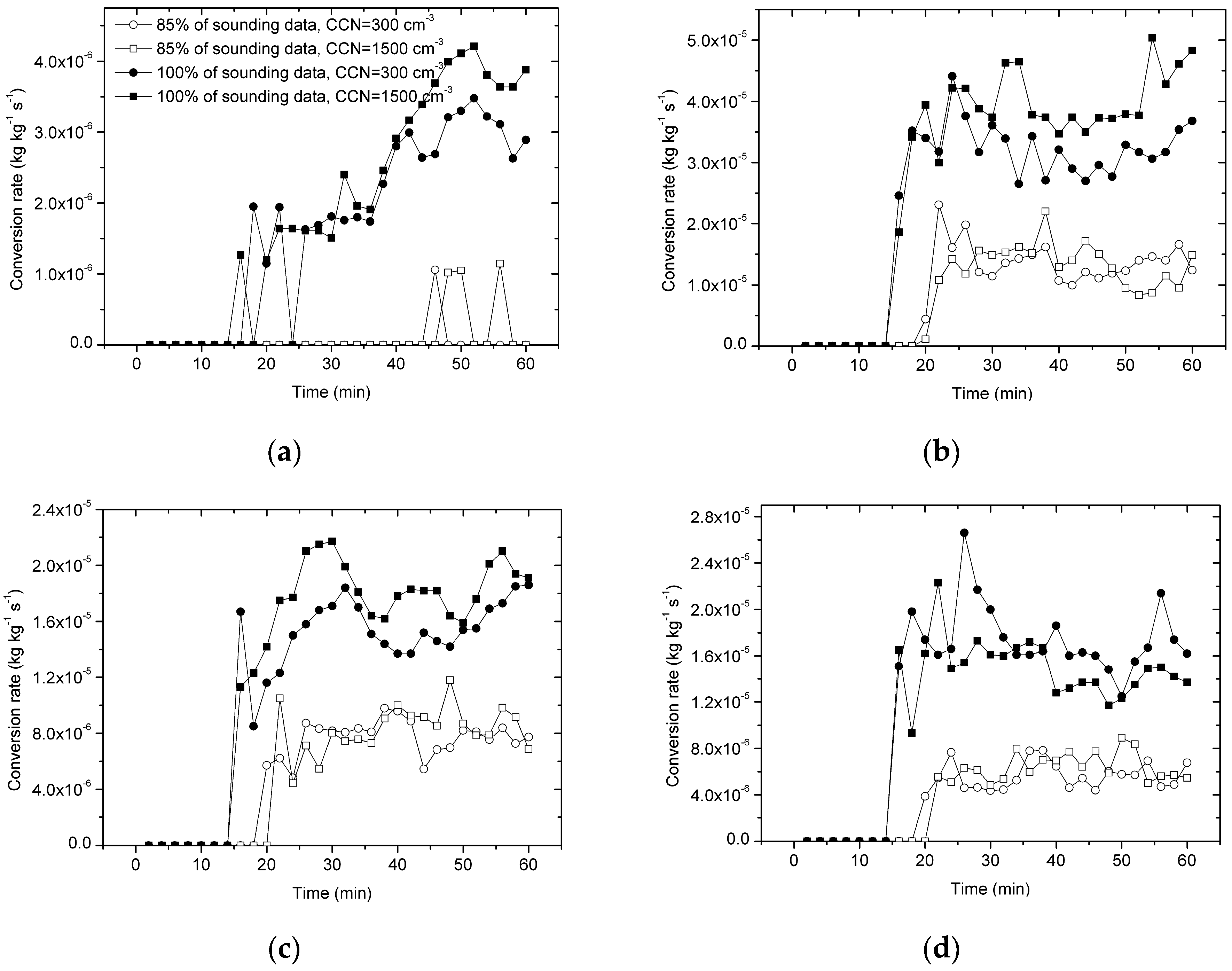
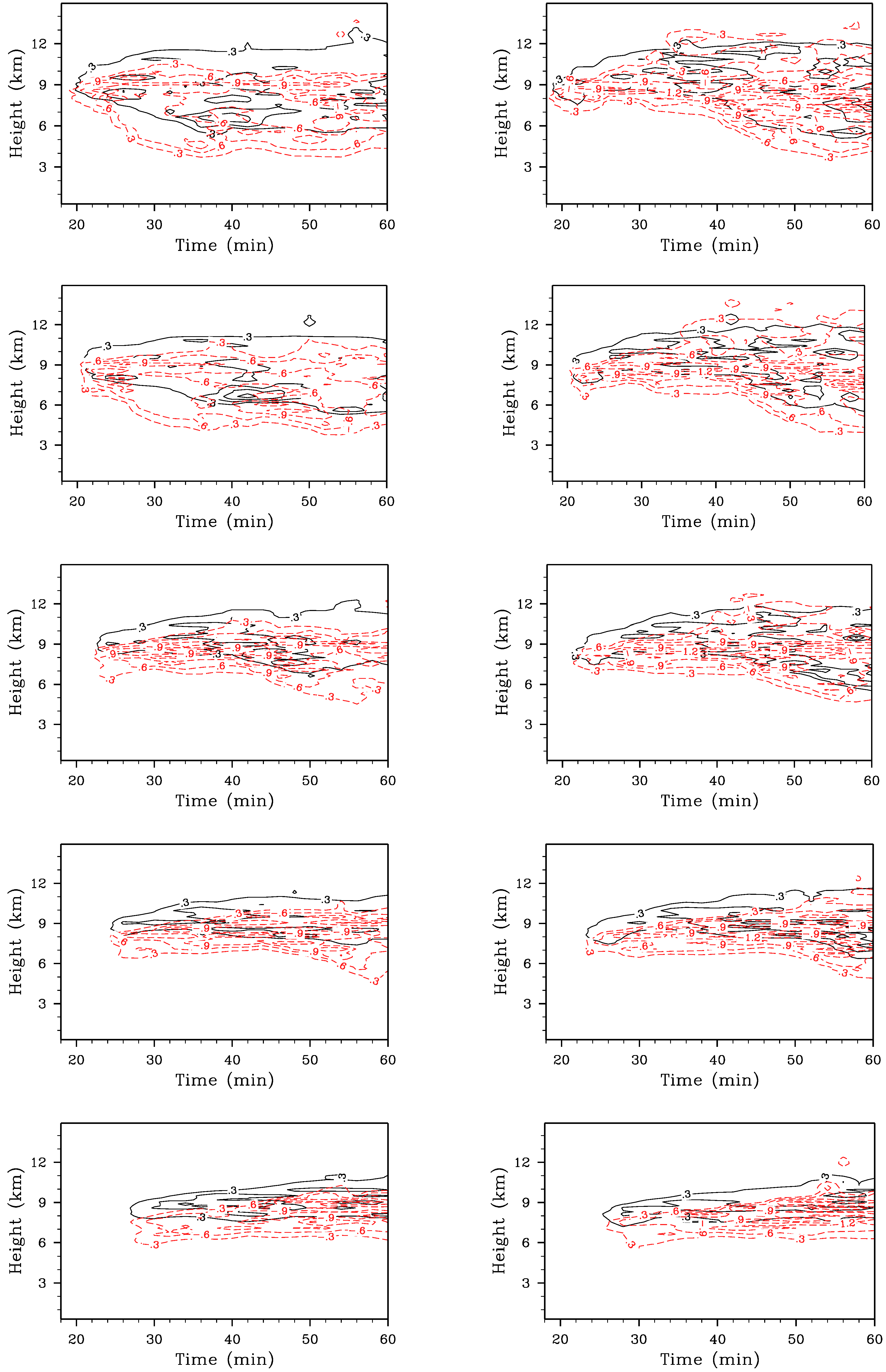
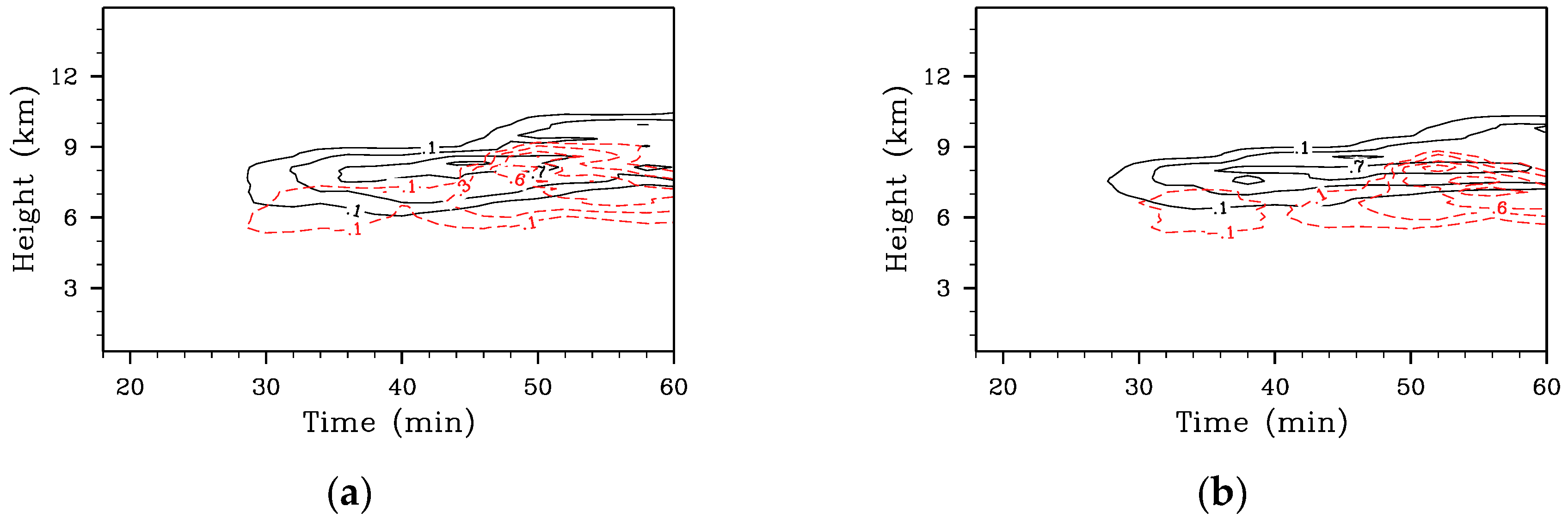

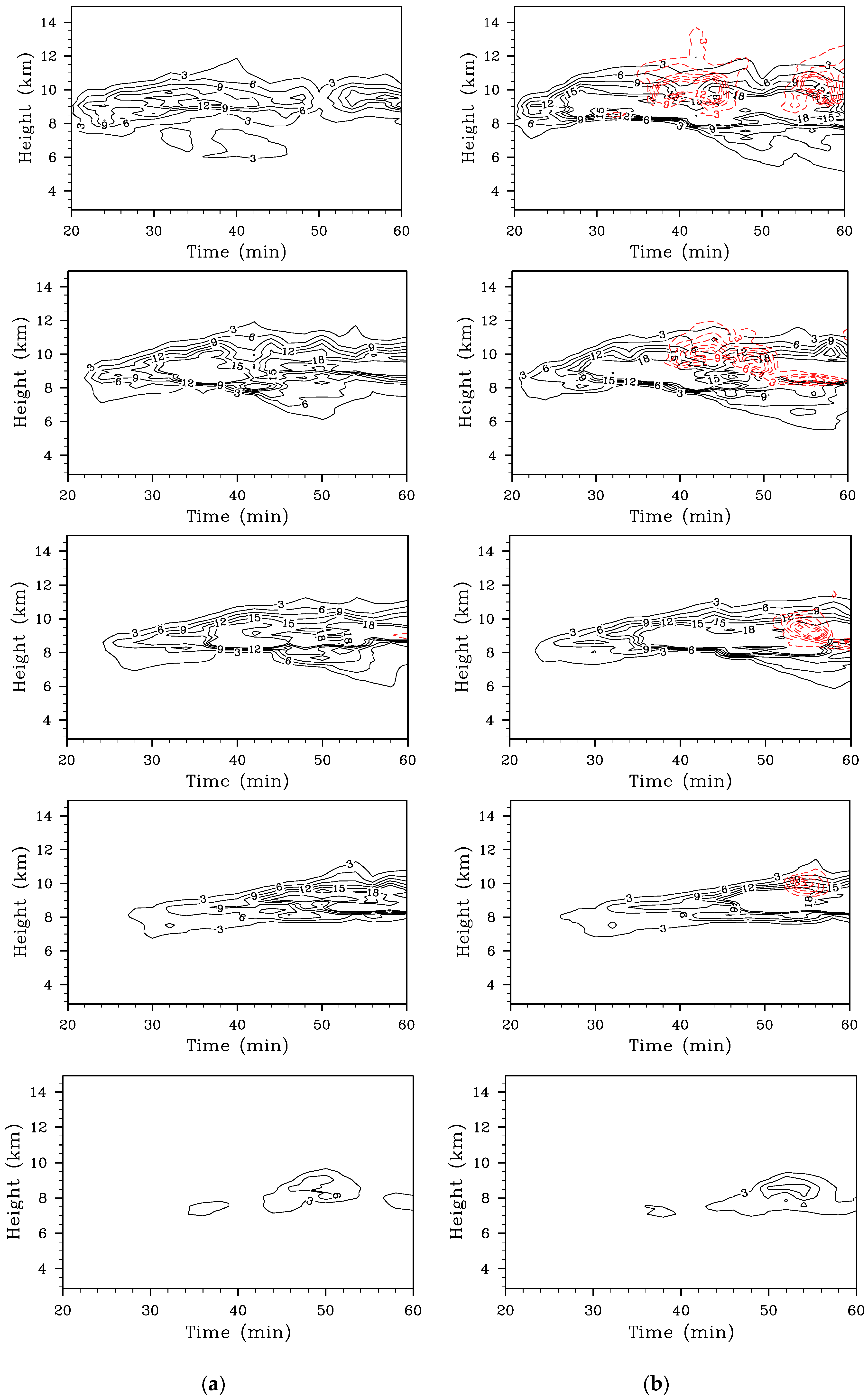
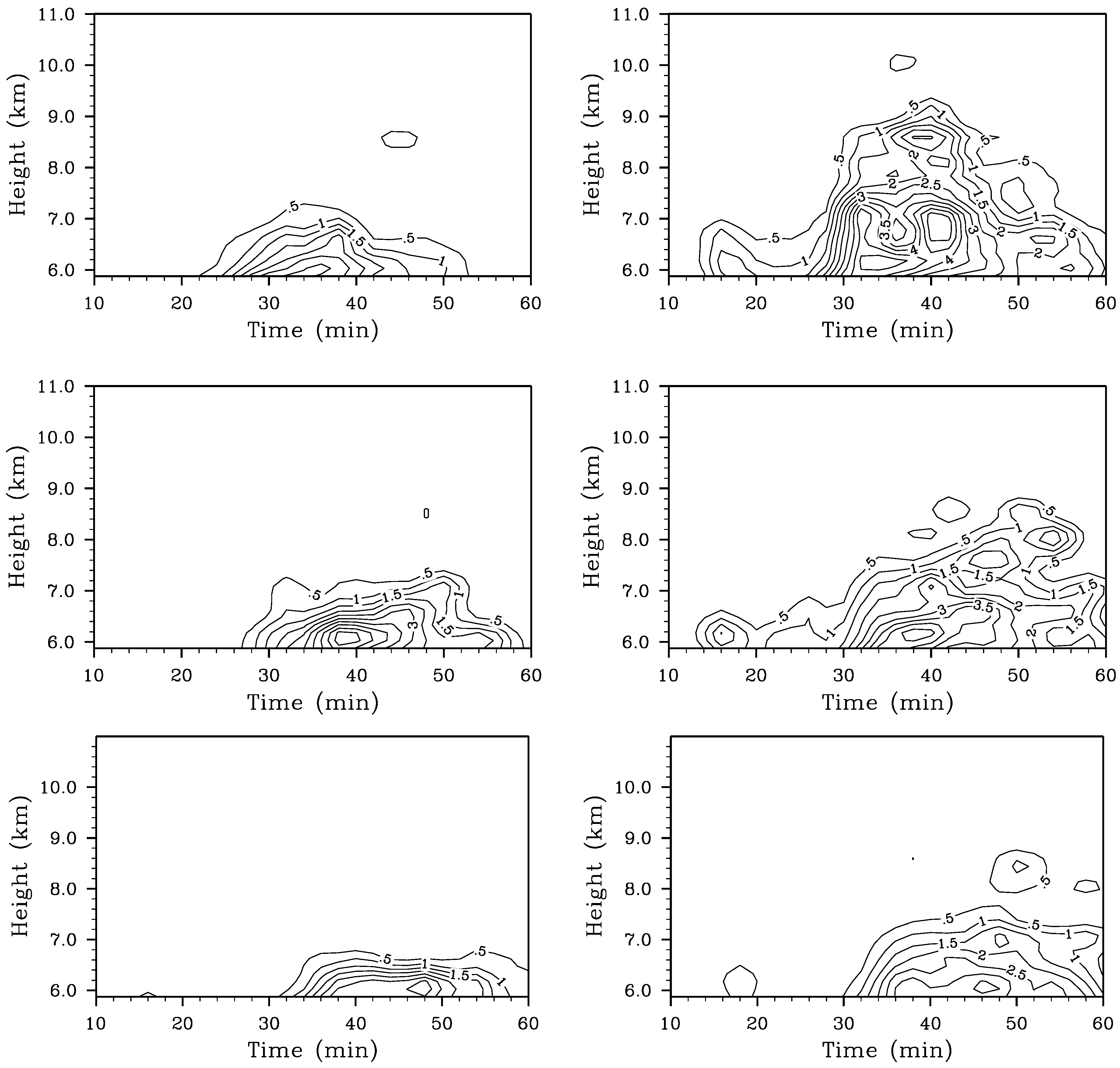
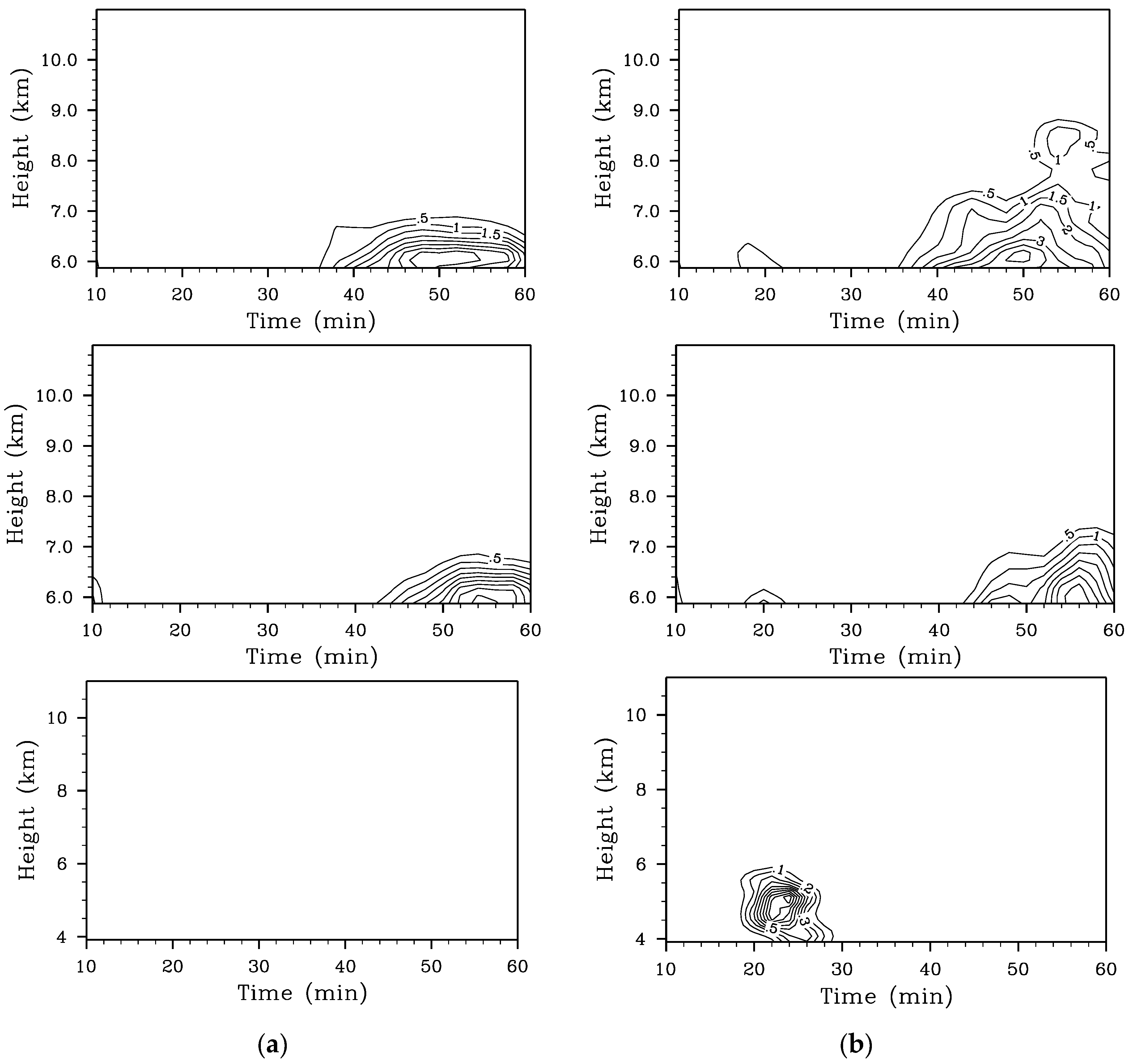
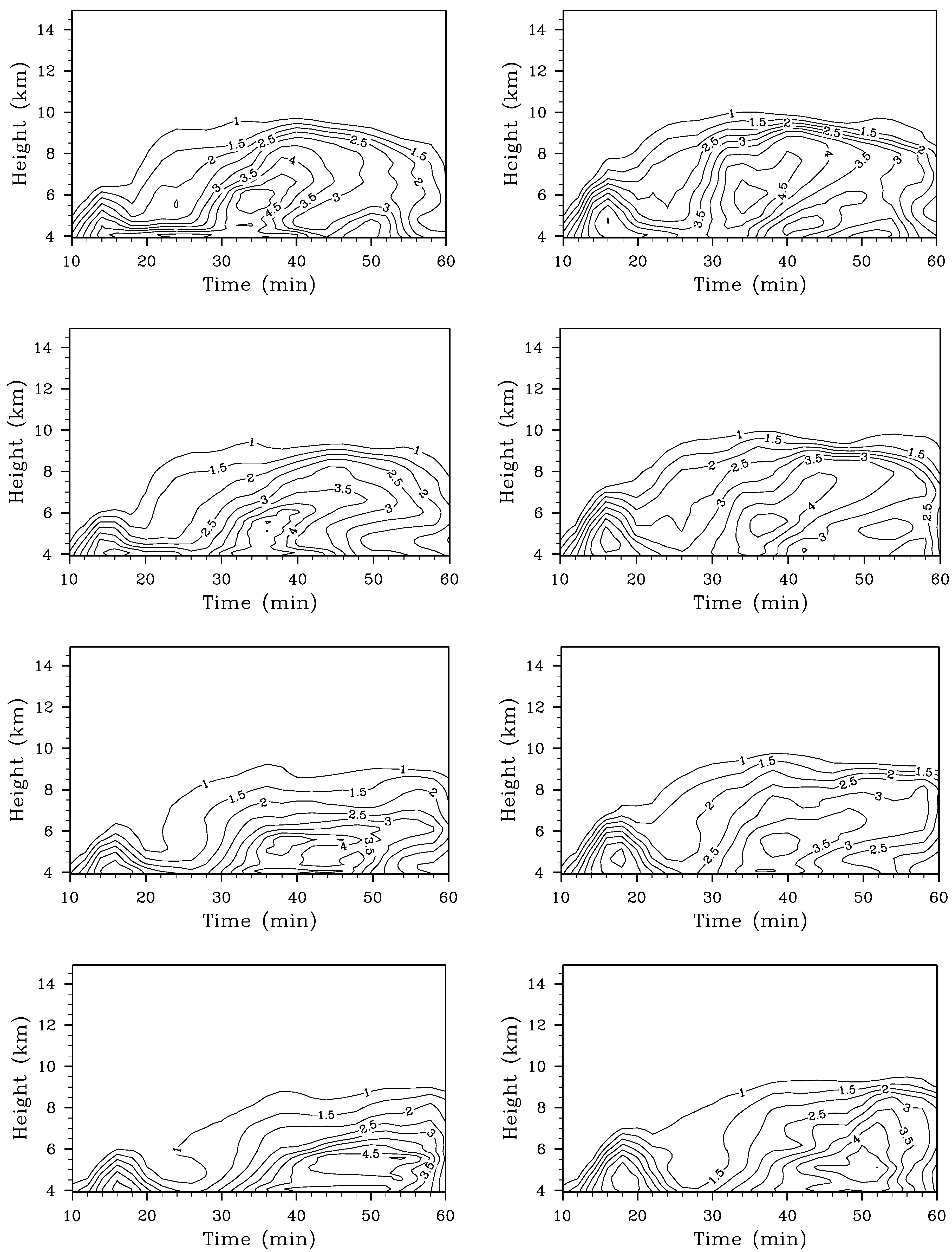
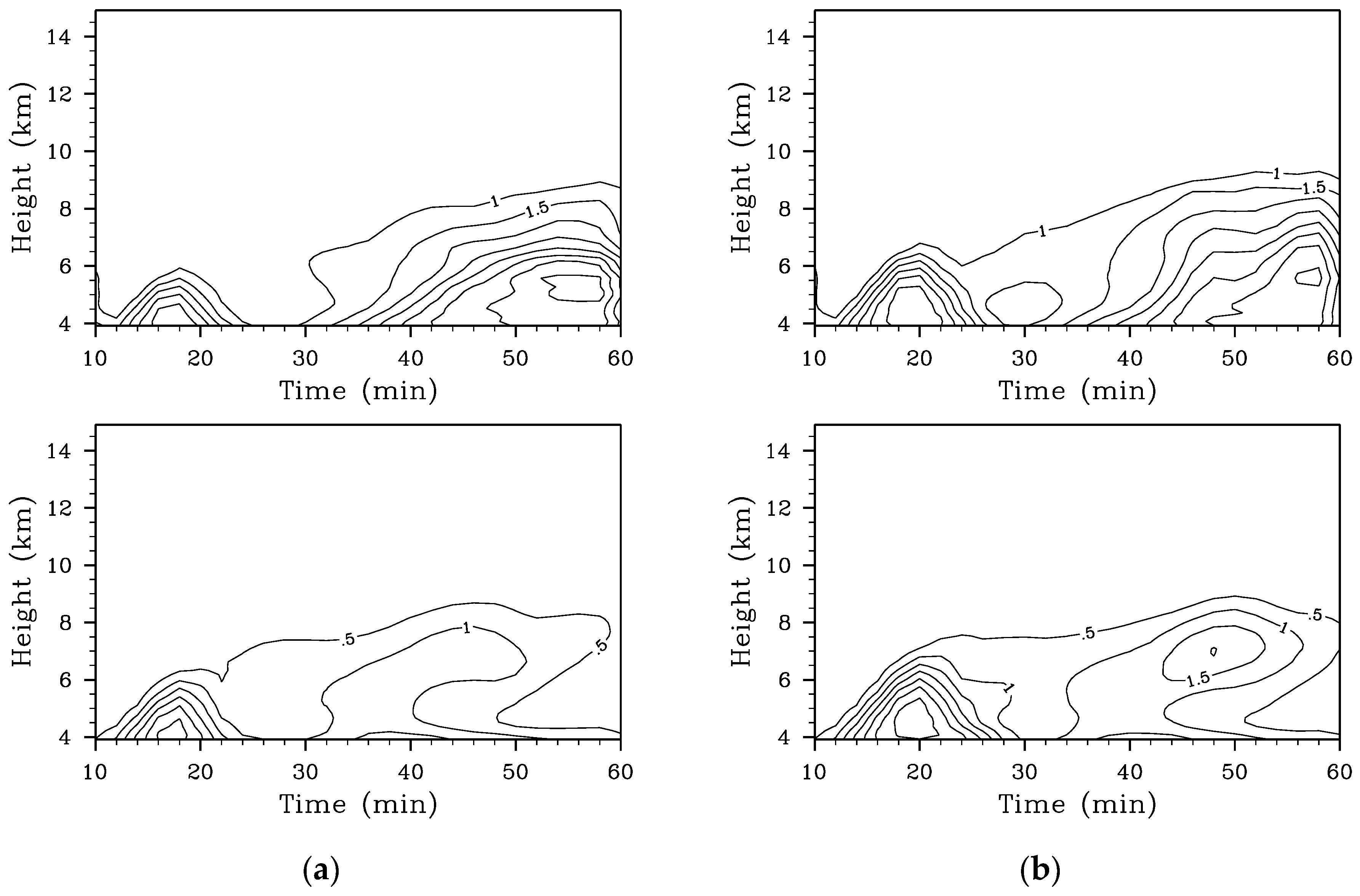
© 2016 by the authors; licensee MDPI, Basel, Switzerland. This article is an open access article distributed under the terms and conditions of the Creative Commons Attribution (CC-BY) license (http://creativecommons.org/licenses/by/4.0/).
Share and Cite
Zhao, P.; Yin, Y.; Xiao, H.; Zhou, Y.; Liu, J. Role of Water Vapor Content in the Effects of Aerosol on the Electrification of Thunderstorms: A Numerical Study. Atmosphere 2016, 7, 137. https://doi.org/10.3390/atmos7100137
Zhao P, Yin Y, Xiao H, Zhou Y, Liu J. Role of Water Vapor Content in the Effects of Aerosol on the Electrification of Thunderstorms: A Numerical Study. Atmosphere. 2016; 7(10):137. https://doi.org/10.3390/atmos7100137
Chicago/Turabian StyleZhao, Pengguo, Yan Yin, Hui Xiao, Yunjun Zhou, and Jia Liu. 2016. "Role of Water Vapor Content in the Effects of Aerosol on the Electrification of Thunderstorms: A Numerical Study" Atmosphere 7, no. 10: 137. https://doi.org/10.3390/atmos7100137
APA StyleZhao, P., Yin, Y., Xiao, H., Zhou, Y., & Liu, J. (2016). Role of Water Vapor Content in the Effects of Aerosol on the Electrification of Thunderstorms: A Numerical Study. Atmosphere, 7(10), 137. https://doi.org/10.3390/atmos7100137




